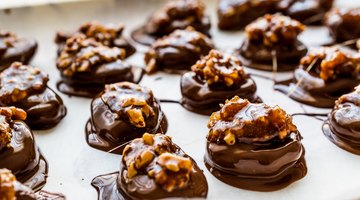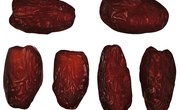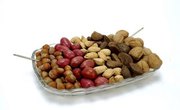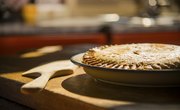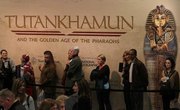Prior to the year 1700, candy was only enjoyed by wealthy people who could afford sugar. However, after sugar producing countries such as Brazil and the West Indies increased their output, the price of sugar dropped. The new low prices and abundance led to the creation of hard candy, glazed treats and nutty confections that could be enjoyed by people of all socioeconomic classes worldwide. Many of these delectable treats are still consumed today.
Hard Candies
Crystallized candy was formed by boiling sugar with colorful ingredients such as fruit juice. A variety of flavors such as peppermint, lemon and orange were also used. As the name suggests, crystallized treats resemble crystals and were regularly used to decorate dessert displays. Plain white sugar sticks, a prelude to peppermint sticks, were introduced as a method to pacify children during Christmas church services. According to Linda Allen, author of “Decking the Halls: The Folklore and Legends of Christmas Plants,” a choirmaster of Germany's Cologne Cathedral suggested bending the top of the candy stick to resemble a shepherd's crook. At this time, people were using common household goods to decorate their Christmas trees, making the sugar sticks even more popular.
Sugar Glazed Treats
In the 1700s, dehydrated fruits were coated with a sugar glaze and served at celebrations. A variety of nuts were also popular to glaze. Although usually only enjoyed by affluent people, these sweet delights eventually found their way into local markets for all to enjoy. However, candy makers did not stop with fruit; they also glazed real flowers and herbs.
Pralines and Brittle
Pralines were invented by making a mixture of almonds and sugar. According to Foodtimeline.org, these French candies were first created by Lassagne, officer of the table to Marechal du Plessis, duke of Choiseul-Praslin. Pralines eventually made their way to Louisiana by way of French settlers, where the almonds were substituted with pecans. Brittle is another nutty candy to gain popularity when nuts were added to either melted molasses, cane syrup or refined sugar. After cooling the hardened mixture, it was broken into small pieces for eating. Because of its simplicity, this was considered an economical candy to make at home.
Fruit and Nut Pastes
Pastes made of a mixture of sugar, eggs and fruits, such as apricots, gooseberries and apples, were another common sweet in the 1700s. These pastes were pounded to create a flat sheet-like consistency; much like the modern-day Fruit Roll-Up. Interest also increased for making marzipan. Marzipan is a nut paste created using ground almonds, which were colored and molded into an artistic variety of shapes.
Related Articles
References
Resources
Writer Bio
Yvonne Ward began her professional writing career in 2004. She wrote a true-crime book published in 2010 and has two more underway. She also has a strong background in business, education and farm living. Ward is pursuing a Master of Arts in history and culture from Union Institute and University.

